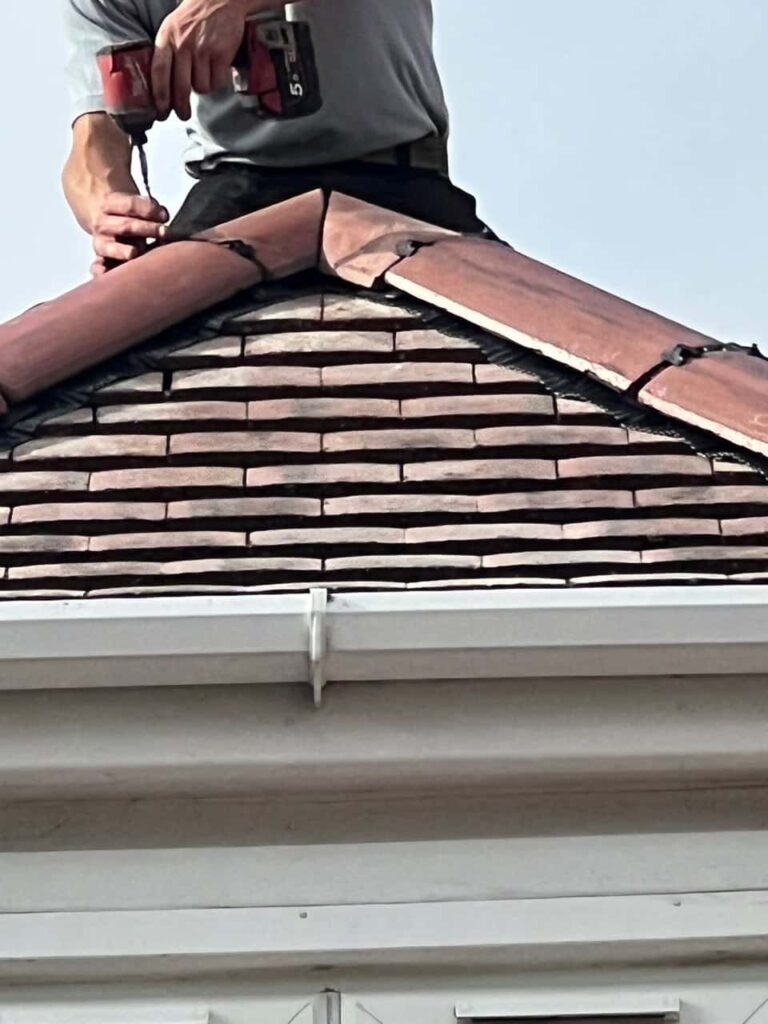When considering the best roofing option for a home in the UK, especially in colder climates, pitched roofs are often the preferred choice. Their design has been used for centuries, particularly in areas prone to heavy rain, snow, and harsh weather conditions. But are pitched roofs really better in cold climates, or are there viable alternatives?
How Pitched Roofs Perform in Cold Climates
Efficient Water and Snow Drainage
One of the biggest advantages of a pitched roof is its ability to shed water and snow efficiently. Unlike flat roofs, which can allow water to pool and increase the risk of leaks, pitched roofs are designed to channel rainwater and melting snow downwards into gutters, reducing the chance of structural damage.
Better Insulation and Energy Efficiency
A well-constructed pitched roof provides excellent insulation, helping to keep homes warm in winter and cool in summer. The additional loft space allows for effective insulation layers, reducing heat loss and lowering energy bills. Homes in colder climates benefit significantly from this feature, as proper insulation reduces reliance on heating systems.
Increased Roof Longevity
Pitched roofs tend to last longer than flat roofs because they are less exposed to water damage. Their sloped design prevents standing water, which can lead to faster deterioration of roofing materials. This makes pitched roofs a more durable and cost-effective solution in regions with cold, wet weather.
Potential Drawbacks of Pitched Roofs in Cold Climates
Higher Installation Costs
Compared to flat roofs, pitched roofs are generally more expensive to install due to the complexity of their structure and the additional materials required. However, the long-term benefits, including durability and energy savings, often outweigh the initial investment.
Snow Load Considerations
While pitched roofs help snow slide off, in extremely cold climates with heavy snowfall, there is still the risk of excessive snow accumulation. Properly engineered roof structures, including reinforced trusses and rafters, are necessary to prevent structural stress and damage.
Alternative Roofing Options for Cold Climates
Flat Roofs with Proper Drainage Systems
While flat roofs are less common in cold climates, they can still be effective if designed correctly. Advanced waterproof membranes, improved drainage solutions, and regular maintenance can help mitigate some of the issues associated with flat roofs in wet and snowy conditions.
Green Roofs
Green roofs, which are essentially flat roofs covered with vegetation, provide additional insulation and help regulate indoor temperatures. However, they require careful design and maintenance to handle heavy rainfall and snow.
Why Pitched Roofs Remain the Best Choice in the UK
For homes in Eastleigh and across Hampshire, where winters can be wet and occasionally snowy, pitched roofs offer the most reliable protection against the elements. Their ability to handle heavy rain, provide excellent insulation, and extend the life of a home’s roofing system makes them the preferred choice for homeowners looking for long-term benefits.
Conclusion
Pitched roofs are undoubtedly better suited for cold and wet climates due to their superior drainage capabilities, energy efficiency, and durability. While they may come with a higher initial cost, their long-term performance and reduced maintenance needs make them a worthwhile investment.
If you are considering a roof replacement or need expert roofing services in Eastleigh, choosing the right roofing solution is essential. Contact us today for professional advice and high-quality roofing services tailored to your needs.
Call us on: 023 8235 7294
Click here to find out more about Eastleigh Roofing Repairs
Click here to complete our contact form and see how we can help with your roofing needs.

